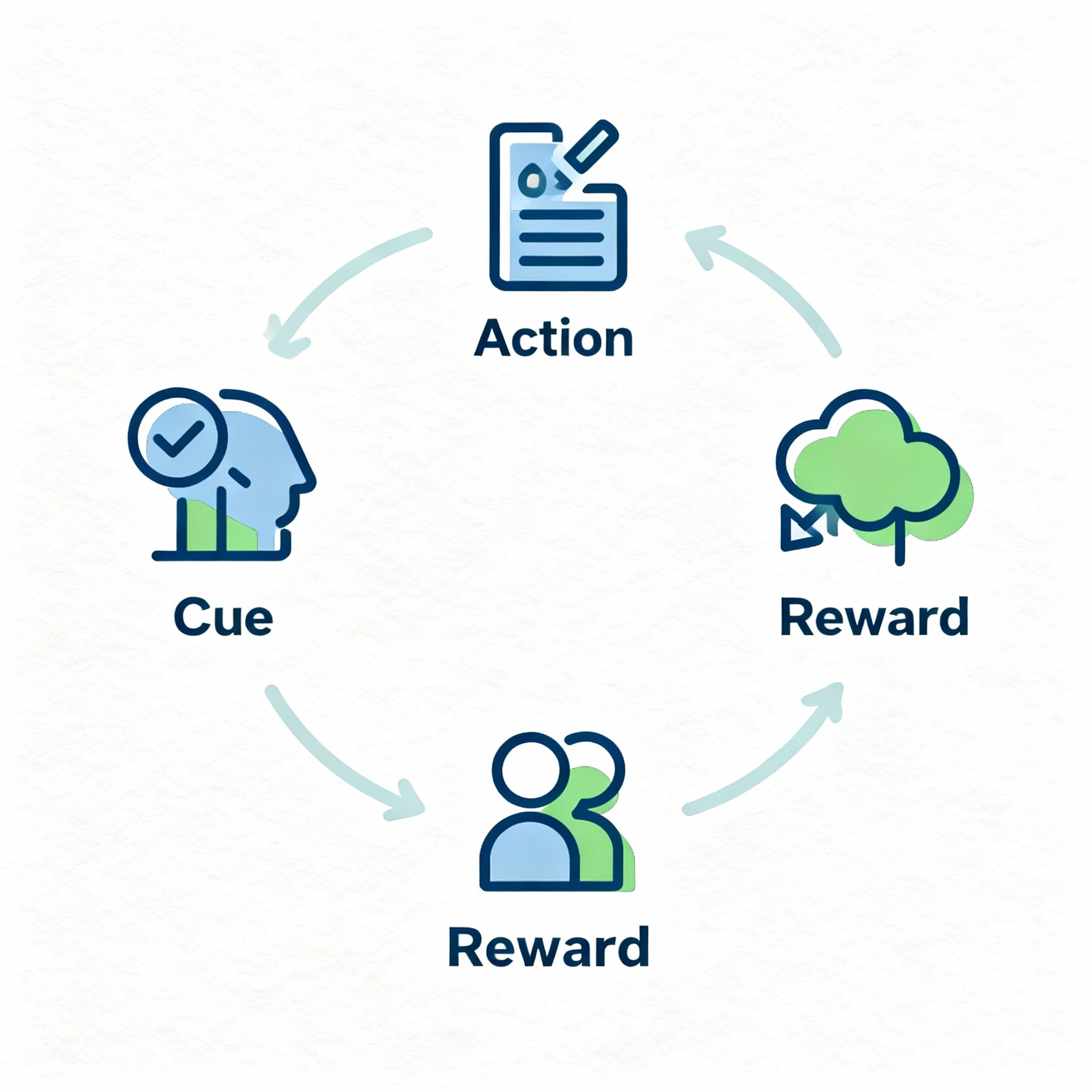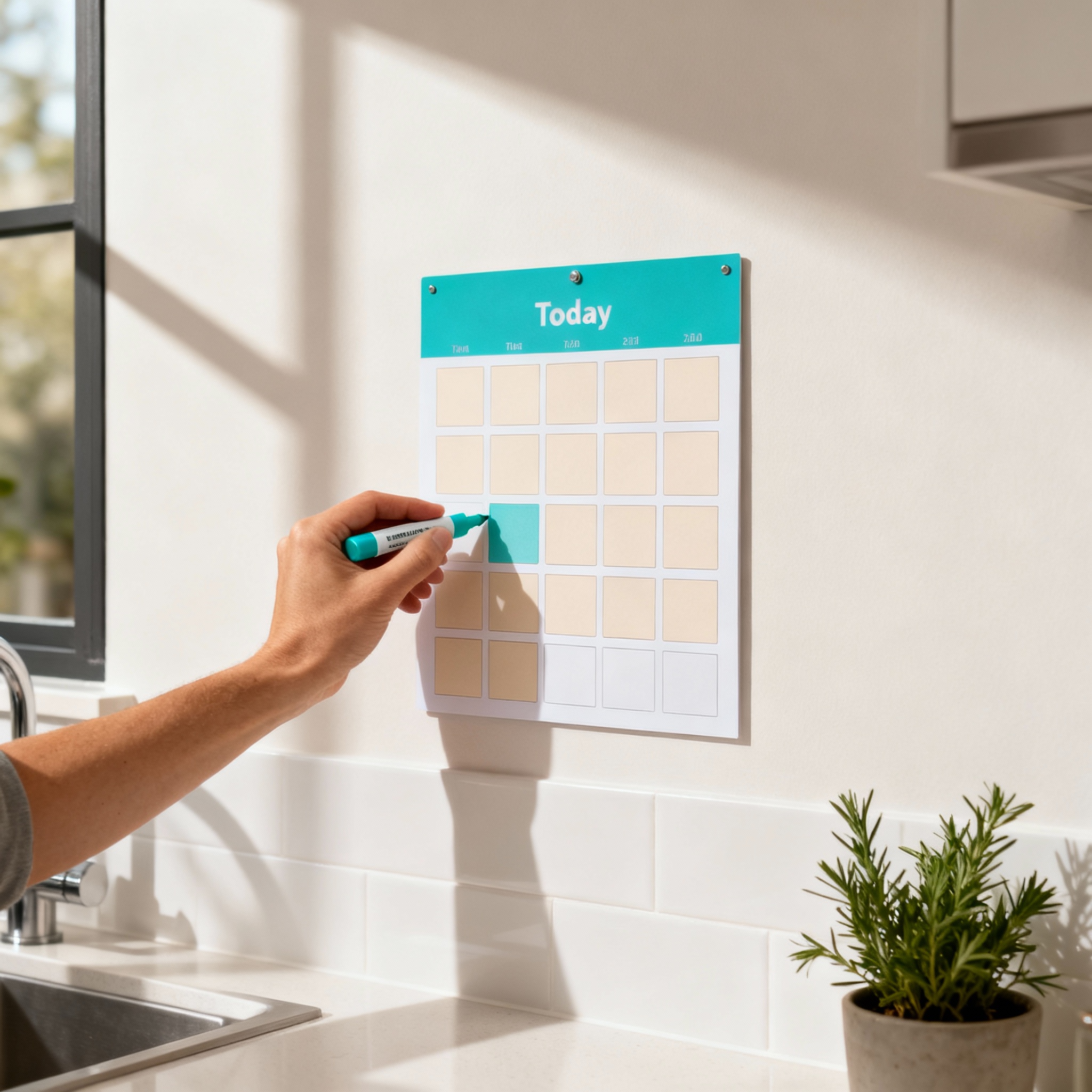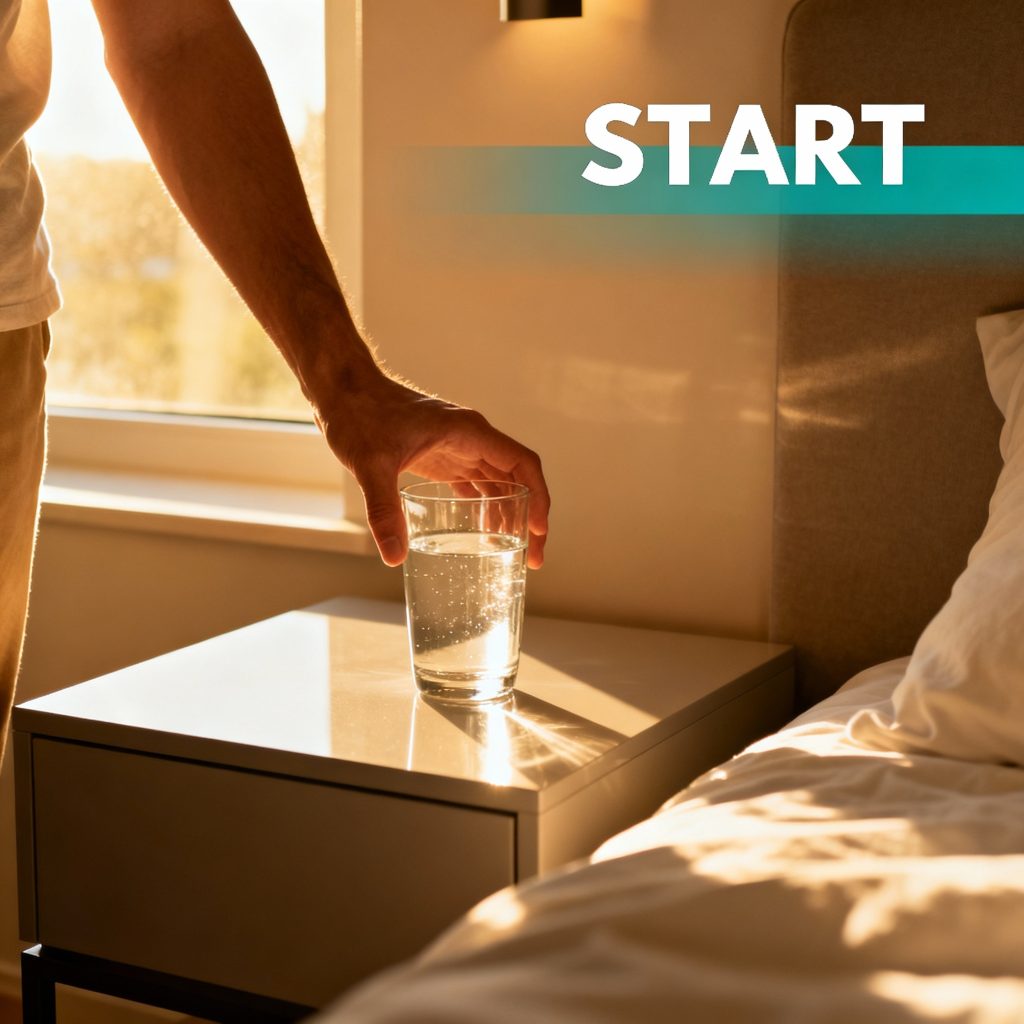You don’t need willpower to overhaul your life overnight. Small, consistent choices add up, and a few simple design changes to your day make new routines stick.
In this article I’ll show approachable, research-backed tactics you can try this week, including simple ways to start a healthy habit that scale from tiny micro-habits to sustainable routines you actually enjoy.
Why small wins beat big promises
Here’s the thing, most people fail because they try to change too much at once. Quick fixes and rigid rules feel motivating at first, then burn you out. Instead, start with tiny, repeatable actions. The research on habit formation shows timelines vary, but consistent repetition and clear cues are the real drivers behind automatic behavior.
Before we jump into specific tactics, pick one habit you care about and one cue you already have in your day. That combination makes success predictable.
 Action -> Reward. Clean l…”>
Action -> Reward. Clean l…”>
Practical steps to begin today
1. Make the habit tiny
Break big goals into the smallest meaningful action. Want to run? Start with putting on your running shoes and walking for five minutes. Want to eat healthier? Start by adding one serving of vegetables to one meal a day. Tiny actions reduce friction and increase repetition.
2. Anchor the habit to an existing cue
Tie the new behavior to something you already do, like making coffee, brushing your teeth, or checking email. This cue triggers the action and keeps it consistent. The strategy is sometimes called habit stacking and it works because your brain learns the context-behavior link faster.
3. Use immediate, small rewards
Immediate feedback helps. After the action, celebrate in a tiny way, like checking a box, a 10-second stretch, or saying "nice" aloud. Rewards reinforce the loop and make it more likely you’ll repeat the action.
4. Reduce friction for the behavior
Change your environment so the healthy choice is the easy choice. Prep water bottles, put workout clothes by the door, or keep fruit on the counter. Environment design is one of the most powerful ways to support new habits.
5. Track progress and keep it visible
Recording a habit visually, whether a simple calendar cross-off or a habit-tracking app, builds momentum. Seeing a streak encourages continuation more than sheer willpower.
6. Use implementation intentions
Create a short plan that states when and where you will act, for example: "After I finish lunch, I will walk for 10 minutes." Clear if-then plans make behavior execution more reliable.
7. Be forgiving and restart fast
Missed days are normal. What matters is how quickly you restart. Expect setbacks, plan for them, and return without judgment.
Real-world examples you can copy
- Morning water habit: Put a full glass on the counter the night before. After brushing your teeth, drink it.
- Short movement break: After every work hour, stand and do two minutes of stretching, then sit back down.
- Better sleep ritual: Lay out pajamas and dim lights 30 minutes before bedtime, then do one calming activity like reading.
If you want templates and weekly planning ideas, check the practical guides at the Marvlus blog for step-by-step samples and habit checklists. For fitness-focused habit plans, see this guide on choosing consistent workout times that work for you.
- More planning ideas at the Marvlus homepage: https://marvlus.blog
- Habit-friendly workout planning: https://marvlus.blog/?p=10
- Guides and tools for routines: https://marvlus.blog/guides/
- Practical how-to examples: https://marvlus.blog/?p=8
Quick science notes (kept short)
- Research finds habit formation timelines vary widely. Many healthy habits start showing automaticity in a few weeks to a few months, depending on complexity and frequency. [Source: landmark habit studies and recent reviews].
- Public health guidance recommends building activity and nutrition targets gradually; small steps toward the recommended doses add up over time. For official activity recommendations, see the CDC physical activity guidelines.

Frequently asked questions
How long will it take before a habit feels automatic?
It depends, but many people notice momentum within a few weeks. Simpler behaviors usually become automatic faster than complex ones. Expect anywhere from several weeks to a few months based on complexity and consistency.
What if I don’t feel motivated after two weeks?
That’s normal. Motivation fluctuates. Rely on the cue and the tiny action instead of motivation. Reduce the action size if needed so you keep the repetition going.
Can I build multiple habits at once?
Start with one or two micro-habits. Once they are stable for several weeks, stack another. Trying too many at once dilutes attention and increases failure risk.
Are apps or trackers necessary?
No, but they help. A simple paper calendar or phone reminder works well. The tool is less important than consistent use.
How do I handle travel or schedule changes?
Plan an ultra-low-friction version of the habit for travel, such as a 3-minute walk instead of a 30-minute run. Keeping the cue consistent is the key.
What about accountability partners?
Social support helps. Share your plan with a friend, join a group, or schedule a recurring check-in. Accountability increases adherence.
When should I consider professional help?
If the habit relates to mental health, addiction, or complex medical needs, consult a qualified professional for tailored support.
Actions to take this week
- Pick one small habit and one existing cue. Write the exact if-then plan in a sentence.
- Prepare one environmental change that reduces friction.
- Track the action daily for two weeks and celebrate tiny wins.
If you want habit templates and weekly checklists to get started fast, Marvlus publishes fresh, optimized content and planning resources that help you build routines that last. Visit https://marvlus.blog to explore sample templates, habit checklists, and weekly article collections.
Next steps and resources
- CDC physical activity guidance for adults: CDC Physical Activity Guidelines
- Habit formation research overview and timelines: key studies and reviews available at major research repositories and public health summaries.
Ready to make it stick?
Change doesn’t need to be dramatic to be meaningful. Start tiny, plan around cues you already have, and measure progress in days and weeks. Over time, small actions become the habits that shape your life.
Conclusion
Starting a healthy habit doesn’t require heroic effort, it needs clarity and persistence. Use tiny actions, consistent cues, visible tracking, and environment design to tilt your days toward better choices. Be patient, restart quickly after slips, and celebrate progress. Those small wins compound into real change.
Take the first step today
Take one minute now to pick the habit and cue you’ll use this week. Write it down, make the tiny environmental change, and mark day one on a calendar. You’ve got this.




